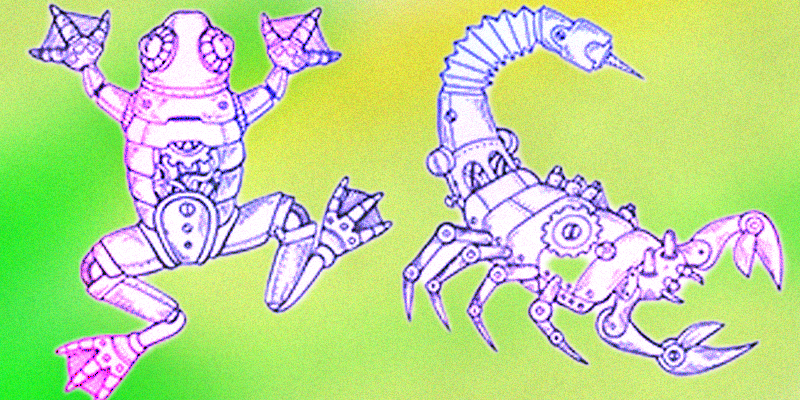When asked to think about the horror genre, most people would conjure the image of teenagers being victimized in some way. Maybe it’s by a vengeful killer at a summer camp, or a crazed man with a chainsaw or a demon they’ve made the mistake of summoning via Ouija board. Regardless, people’s first experience with horror often starts with teenagers at the center of the story. It’s a trope of course, but one that understands the best way to cause the feeling of dread and unease for which the genre is known is to watch vulnerable people backed into a corner.
It’s the feeling of “they don’t deserve this” and “why doesn’t someone help them” that is the cornerstone of horror and nothing highlights this more than horror as social commentary. A current example of this would be any of Jordan Peele’s movies. While Get Out is the most well known, Nope is still dripping with commentary about the foolhardy attempt of making dangerous animals into spectacles for the TV and film industry. I recently watched a re-run of a F.R.I.E.N.D.S episode where the character Ross Geller has a literal pet monkey named Marcel. Nowadays, you will hardly see a live animal on TV that isn’t a dog or cat–have you thought about why?
Social commentary creates space for horror to meet reality. It’s a bridge for you to consider the ways that your daily life is affected by a Boogeyman that doesn’t necessarily hide in your closet. The horror takes the shape of something most familiar to you–or what’s familiar to others. It doesn’t shy away from the worst of humanity, be it sexism, racism, or even the dehumanization prevalent in the service industry. In fact, it serves it back to you on a platter and asks the question: are you the scorpion, or the frog?
If you’re unfamiliar with the fable, it’s simple: a scorpion needs to cross a river and asks the frog to carry it on its back. The frog hesitates due to its fear of being stung but the scorpion promises not to because stinging the frog would doom them both. The frog carries it across but halfway across, the scorpion stings the frog anyway. And as they both drown, the scorpion apologizes because it could not fight the urge; after all, stinging is in its nature.
When it comes to horror as social commentary, the unfortunate truth is this: the horror presented to the status quo is what’s already happened to the marginalized. Is The Handmaid’s Tale horrifying to you? Well then, you’re not going to like the role of Black women in the history of gynecology. Have you read Gretchen Felker-Martin’s Manhunt or Cuckoo? Then you can appreciate how terrifying this world is to trans people.
If you’re already marginalized in some way–if you’re the frog–it’s not hard to imagine what it’s like to be stung. Your everyday life is uncertain, fear as intimate as your own skin. And when you encounter a horror story where the social commentary expresses that fear in a way you couldn’t, you go yes! That’s what it’s like to be me! And it’s awful! When you’re the frog, there’s a cathartic nature to horror as social commentary. You notice the increasing danger with each passing second, you feel it dig into your skin. The fear deepens because the horror is personal. You’ve seen the story play out before and it doesn’t get any easier.
And yet, though the fear may be intimate and the horror may be personal, hope persists nonetheless. If the main characters survive, so can you. Or maybe the catharsis is enough to keep you going a little longer. Maybe it’s enough to know that others are watching and learning what your life is like. Fear does more than keep us on the edge of our seat–it makes us cling to life.
Perhaps you’re the scorpion. You’re the white person who doesn’t care for history or you’re the cis person who’s on the fence about this whole “transitioning” business. You can’t imagine ever being victimized in similar scenarios. Except horror as social commentary doesn’t give you a choice. It forces you to grow empathy for other people and to use your imagination.
There’s a reason why it’s called social commentary. It offers critique on society as a whole. The horror is drawn from our connections with each other, and makes us reconsider the roles we play in each other’s lives. And while a frightening endeavor, it can also be educational. A person may learn they have a much larger role in the world than they thought–or they realize how small they truly are. It becomes a new experience that gives them insight into other people’s lives. And it can create a new fear.
Consider the typical zombie apocalypse story. It is not all about avoiding being bitten. It’s about recreating communities, prioritizing safety, and using deescalation tactics during stressful situations. People’s biggest fear in a zombie apocalypse is dying–but beyond survival, how would one live? How paranoid would you get among a small group of trigger-happy survivors? How quickly would you accuse someone of hiding a bite mark or vice-versa? What would be worse–death or complete isolation?
While these questions are tailored to the zombie subgenre, similar questions could be made of any other horror stories, especially when social commentary is a prevalent element in the narrative. For the frog, the horror is already personal. For the scorpion, the horror becomes personal. The two cannot escape each other so long as they live in the same environment, and neither can you escape the critiques. So long as you live in a society, you are part of the story.
The only question is: are you the scorpion–or the frog?
***


















